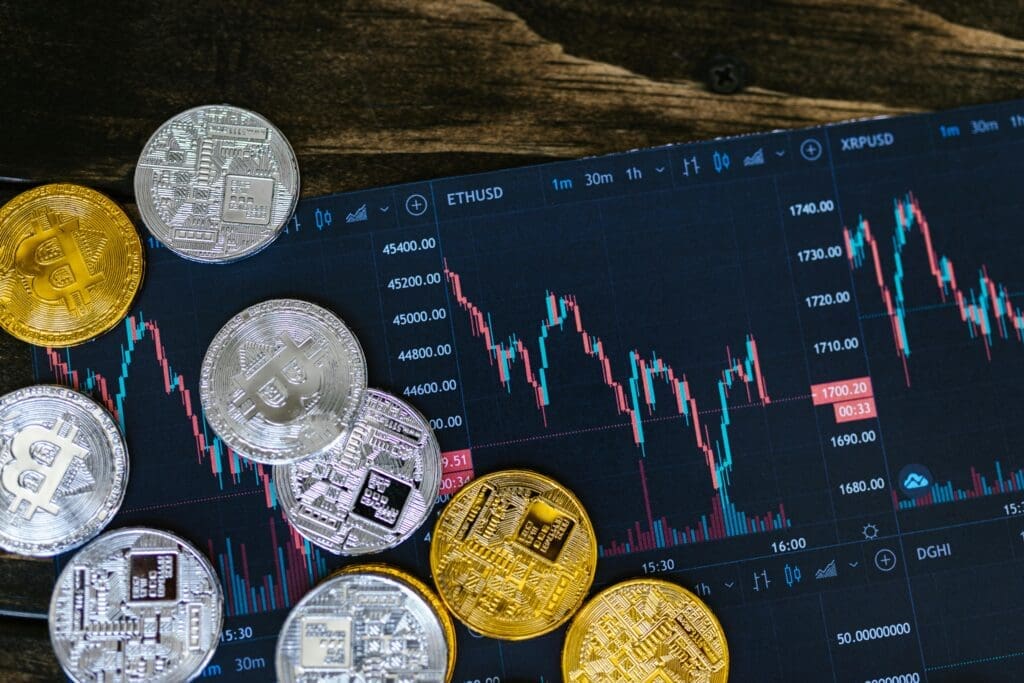Bitcoin Down in June But Not Out

Analysis of Bitcoin and Crypto Market Trends
In the volatile world of cryptocurrency, Bitcoin has proven to be resilient despite its recent price fluctuations. Throughout June, Bitcoin traded within the range of $59,000 to $71,000, closing the month at $62,600. Despite a dip towards the lower end of the range in the last 10 days, there are several interesting factors influencing the market.
One notable development is the significant decrease in Bitcoin holdings by miners, which has brought their holdings to the lowest level seen since 2018. This, coupled with the lack of interest and extremely low trading volume, has suppressed the price of Bitcoin. Additionally, hedge funds shorting Bitcoin in the futures market have contributed to this decrease in price but, there is evidence they are unwinding their positions which should decrease the selling pressure.
However, on the bright side, large holders have taken advantage of the lower prices and begun accumulating Bitcoin below $64,000. This accumulation, along with the reduction in Bitcoin holdings on exchanges to just over 2 million coins, indicates a potential period of accumulation by institutional investors. One such high-volume investor, known as Mr. 100, has recently re-entered the market after a 34-day hiatus. Speculation surrounds the true identity of Mr. 100, with possibilities including Jeff Bezos, Michael Dell, or a sovereign wealth fund. Mr. 100 gained his nickname by consistently purchasing 100 Bitcoin daily since November 2022. If you’re interested, you can track his wallet here.
Technical indicators, such as the relative strength index, suggest that Bitcoin is currently oversold, signaling a potential upward movement in the price in the near future.
Developments in the Crypto Market
While Bitcoin has managed to weather the storm, altcoins have experienced a significant sell-off. Bitcoin dominance in the overall market rose to 56% in June before settling back to 54.5% at the end of the month. This indicates a temporary pause in the selling pressure on altcoins. However, the performance of altcoins continues to be tied to the movement of Bitcoin.
Amidst challenges, there are promising developments within the crypto market. Solana, for instance, has made noteworthy technical upgrades and launched mobile applications, potentially accelerating adoption. Ethereum is also set to benefit from several ETF launches scheduled for early June, with trading expected to commence on July 8th. Furthermore, projects like Avalanche, Polkadot, Sui, and Coti are expected to announce significant developments in July and August, which may reignite market interest. Nonetheless, it remains clear that the trajectory of altcoins is heavily influenced by the movements of Bitcoin.
Altcoins and Macroeconomic Challenges
The altcoin market is grappling with a significant influx of tokens and coins, most of which lack utility or purpose. This oversaturation poses a threat to established projects like Solana, Cardano, Ethereum, Avalanche, and Polkadot, as liquidity is diverted toward meme coins and projects with questionable value. The oversupply of these tokens is diluting the value of tokens that actually provide real-world solutions.
Moreover, the crypto market faces macroeconomic headwinds. The Federal Reserve’s refusal to lower interest rates and the overall deterioration of the United States’ financial health are concerning factors. US banks currently have ten times the amount of unrealized losses compared to those during the 2008 financial crisis. Furthermore, rising unemployment, falling consumer sentiment, and an inverted yield curve are all signs pointing toward an imminent recession. Such a downturn would undoubtedly impact the crypto market negatively.
In addition, the strength of the US dollar against other currencies, such as the collapsing Japanese yen, creates further obstacles. The Bank of Japan is resorting to selling US Treasury bonds in an attempt to stabilize its currency, while China is undertaking similar actions. These factors, along with the annual ever expanding trillion-dollar debt servicing required by the United States, are causing abnormally high bond yields. Consequently, even robust assets like Bitcoin, gold, and silver may experience short-term declines. However, similar to the recovery from the Covid-induced collapse, sound money and hard assets are likely to lead the way in the subsequent recovery.
Is now a good time to buy Bitcoin?
The timing of entering the Bitcoin market depends on one’s investment horizon. If you have a long-term perspective of more than 5 years, any time can be considered a good time to buy Bitcoin. Currently, none of the four indicators that have previously predicted the top of the Bitcoin cycle suggest that we are near the end. However, as with any investment, there are no guarantees.
For those with a shorter time frame, it may be wise to hold onto cash until Bitcoin dominance drops below 50%. At that point, purchasing altcoins and converting them back to Bitcoin at the end of the cycle could prove to be a profitable strategy. Regardless of the chosen approach, it is crucial to prioritize accumulation as a key factor for long-term wealth preservation within the volatile cryptocurrency market.
Final Reflection: Navigating the Bitcoin Cycle and Embracing Change
The Bitcoin Cycle and the broader cryptocurrency market are sources of ongoing speculation and debate, with conflicting opinions on whether the current market will follow previous patterns or break out sooner. As global financial dynamics evolve rapidly, it becomes crucial to gather more data before making definitive predictions.
In the face of potential volatility ahead, maintaining a patient and alert mindset is essential. The allure of significant gains should be balanced with a foundational understanding of the underlying technology and principles driving this transformative industry.
As the erosion of trust in traditional financial systems continues, cryptocurrencies present a compelling alternative that is immune to debasement and exclusion, given access to basic technology. With central banks and governments grappling with economic challenges, the choice between placing trust in traditional institutions or embracing decentralized currencies becomes increasingly significant.
At this critical juncture, we are prompted to consider the following: will we continue to support institutions that may be faltering, or will we opt for currencies that offer resilience and inclusion on a global scale? The decision to embrace cryptocurrencies goes beyond financial gains; it represents a stance on trust, transparency, and empowerment in the digital age.
In this rapidly evolving landscape, staying informed, curious, and engaged is paramount. Make decisions that align with your values, beliefs, and long-term aspirations as we collectively shape the future of finance and technology.
Bitcoin or Fiat, What choice will you make?
As always, it’s important to conduct your own research and this is not intended as financial advice.








I spent a lot of time on Wikileaks and researching Bitcoin. Then watching the Craig Wright saga and COPA lawsuits, I’m not sold on BTC. BSV is “the original Bitcoin.”
Anytime you see major fluctuation… it’s being manipulated like the stock market. Blackrock started their BTC ETF. Just like the silver market, people will invest in BTC that they already sold to 10 other people. I believe BTC will fail, BSV willprevail.
BSV is a fork of Bitcoin and Craig Wright has been found to be a fraud. They cannot sell paper bitcoin in the ETF as the AUM (Assets Under Management) can be verified on chain. Bitcoin is the real deal, do not fall for things like Bitcoin Cash and BSV, they do not have the network security of Bitcoin.